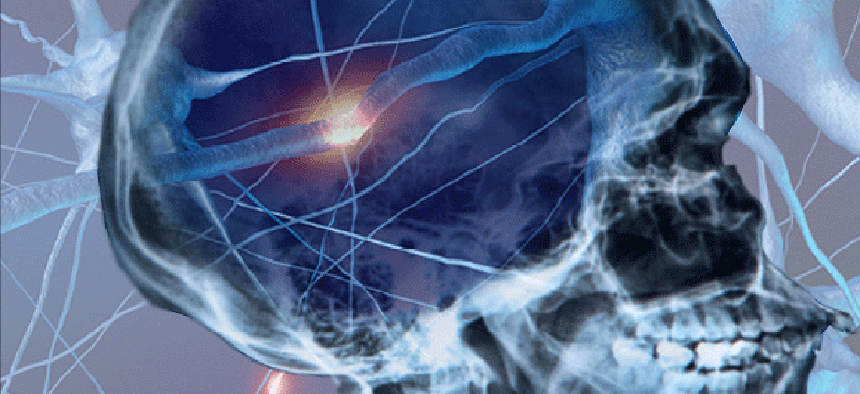How a simulated brain outperforms supercomputers


Connecting state and local government leaders
Neurogrid, a small, low-power system created by researchers at Stanford, could improve brain and mental illness research.
It may sound like science fiction, but the National Science Foundation reports that researchers have created a human brain simulator that in many ways can out-perform the world's fastest supercomputers.
The simulated brain is called Neurogrid, and is the brainchild (terrible pun, I know) of a team at Stanford University. Neurogrid is made up of just 16 chips, though each of them contains more than 65,000 silicon "neurons" whose activity can be programmed according to nearly 80 parameters. In a lot of ways, Neurogrid simulates the human brain, and it could one day help to map out processes relating to schizophrenia and brain injuries, which are nearly impossible to do with a standard computer, even a supercomputer.
So why is Neurogrid so much better at this than a supercomputer? It all has to do with home field advantage. Both Neurogrid and the human brain are much slower than a supercomputer for most tasks. Neither could map out a nuclear blast or model the Big Bang Theory, but both are much better at performing certain tasks than any traditional computer.
According to Neurogrid developers Sam Fok and Alex Neckar, the difference between the way traditional computing systems model the brain and the way Neurogrid works is how communication works within the system, or how the neurons talk to each other. Computers use digital signals — things are either on or off, much like the human brain. But in a human brain and Neurogrid, communication is handled by a continuous non-linear process. It's actually very much like an analog signal. Neurogrid uses an analog signal for computations and a digital signal for communication. In doing so, it follows the same hybrid analog-digital approach, networking all of its neurons, as the brain. And it runs on five watts of power.
A supercomputer such as IBM’s Blue Gene/Q Sequoia can be programmed to model one second of brain activity, but it takes about an hour. By contrast, Neurogrid can model one second of human brain activity in one second, because it's pretty much a model of the human brain itself.
So if you are ever challenged to a thinking contest by a supercomputer, be sure that the topic is mapping the human brain, so you will have some chance of winning. More important, it's great to see that the Neurogrid simulation will soon be helping to combat brain disorders like autism and Alzheimer's disease, which have been painfully difficult to model using traditional computers.




